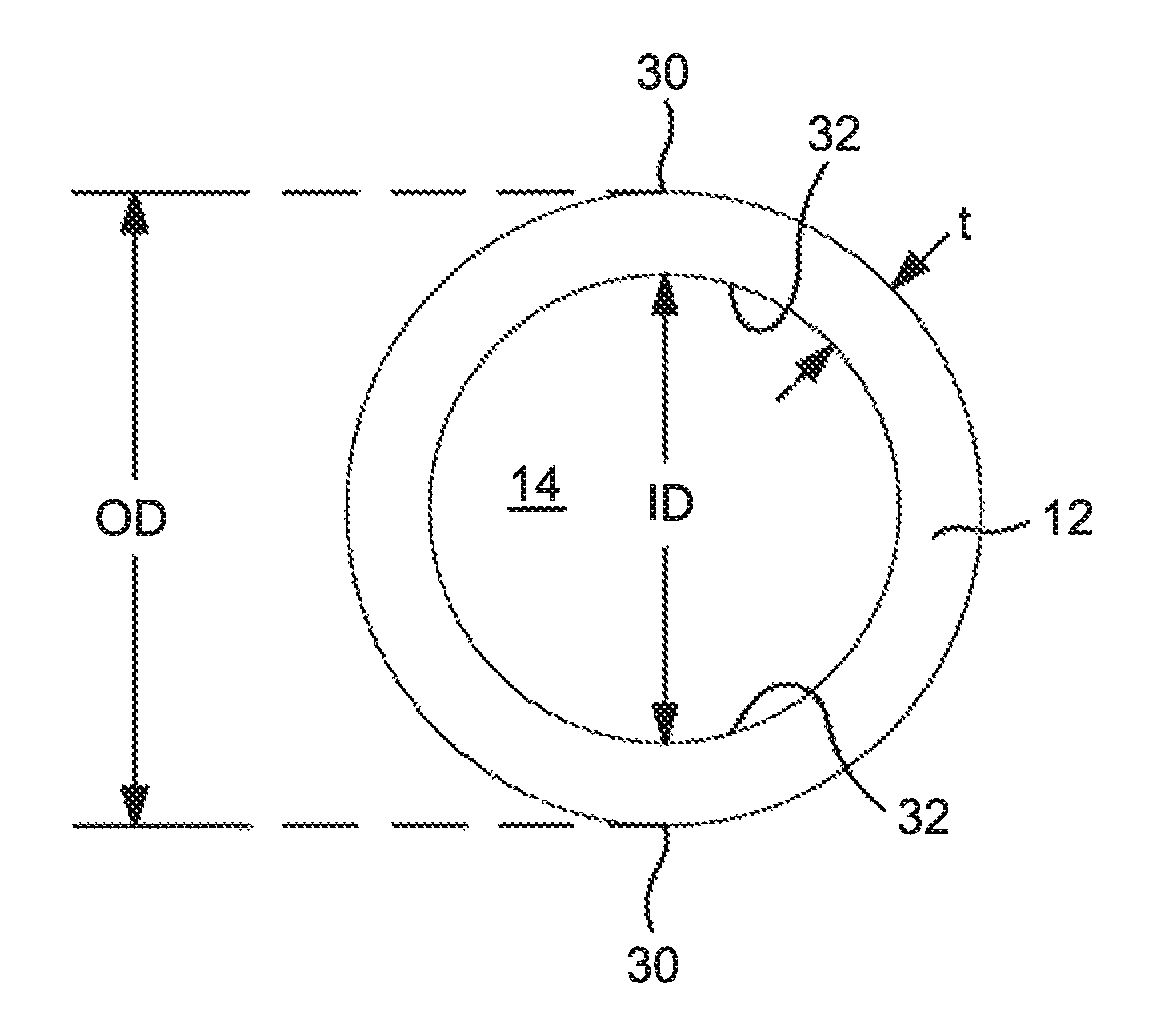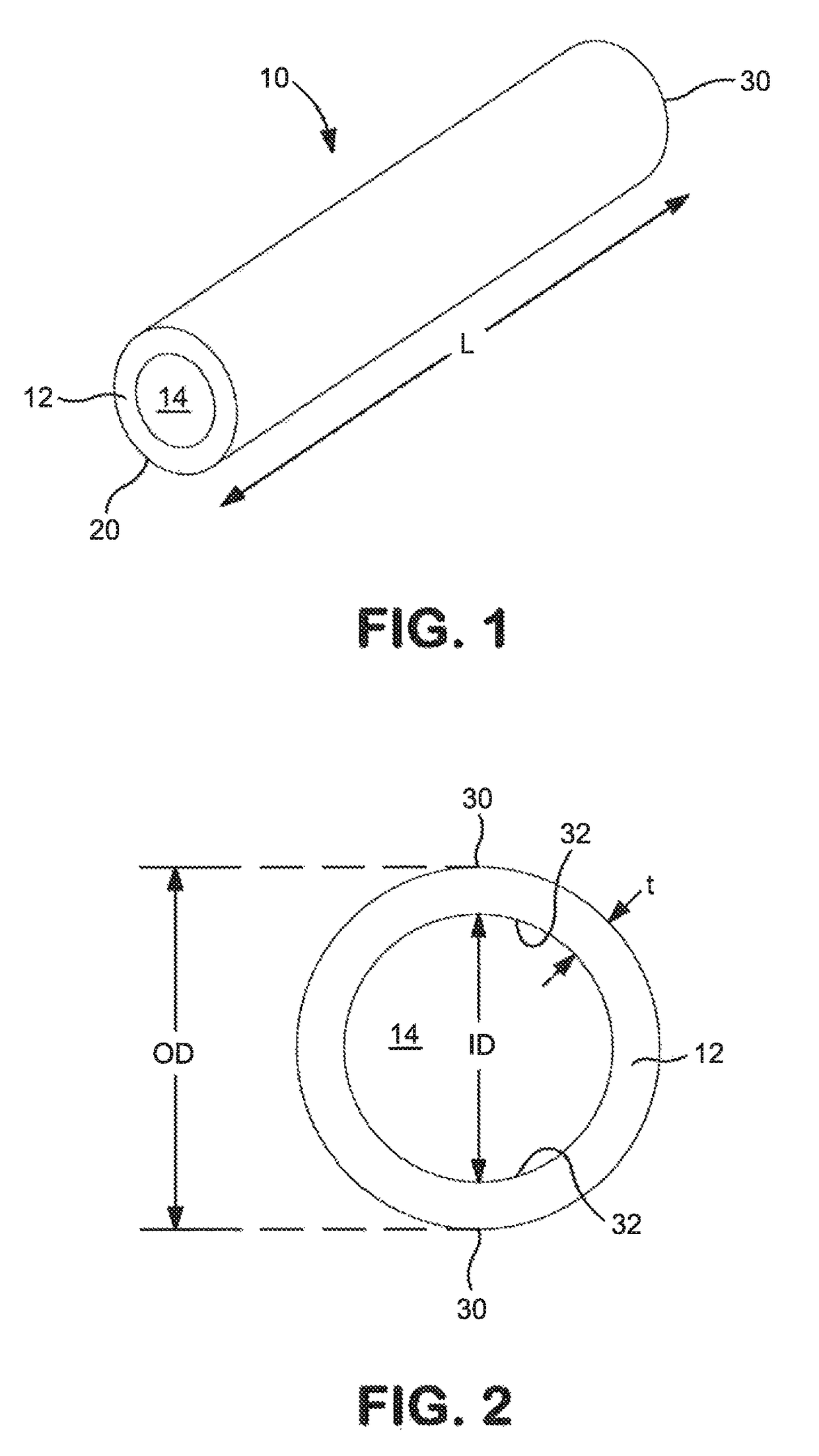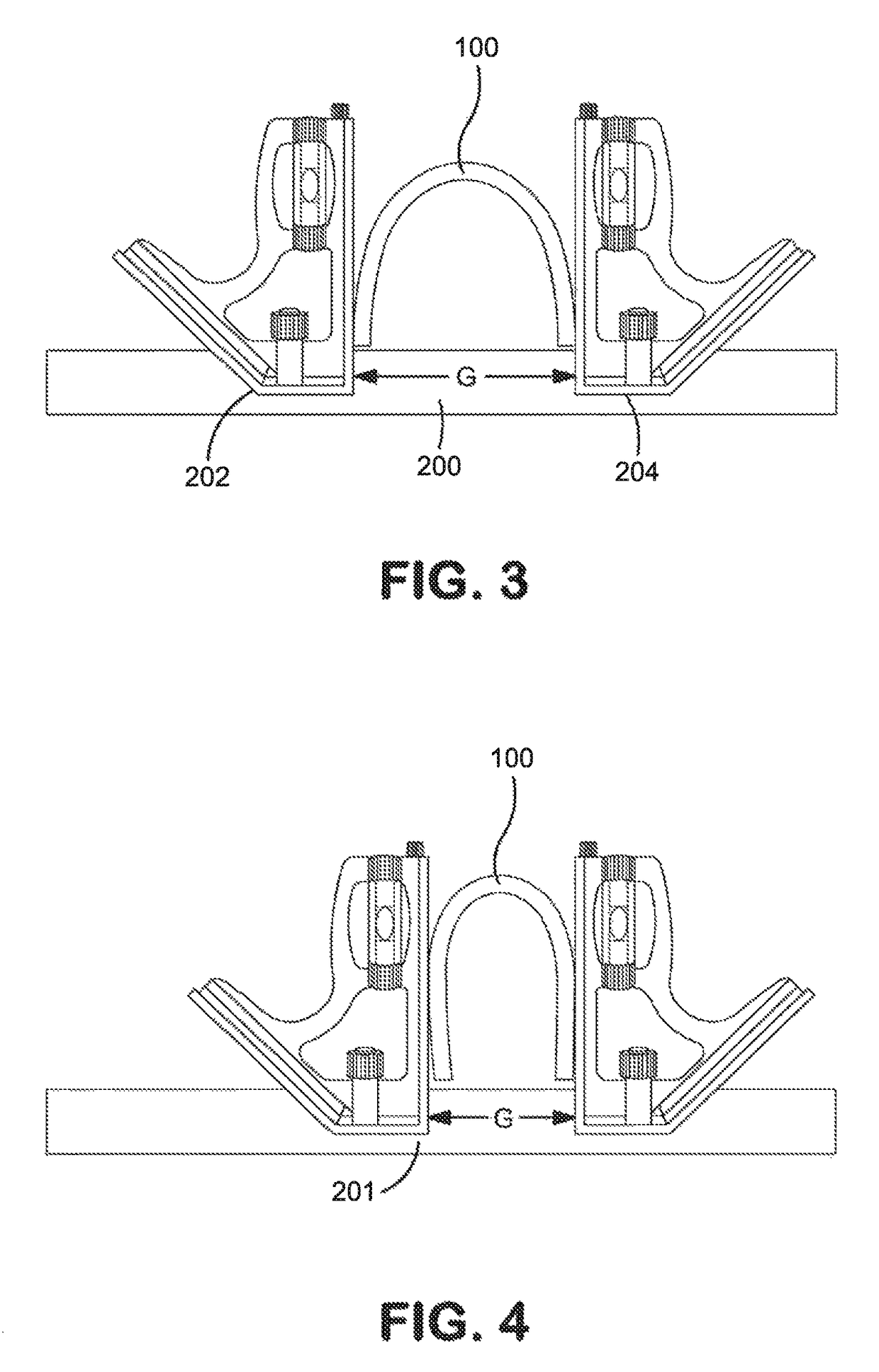Medical tube
a technology for medical tubes and tubes, applied in the direction of catheters, etc., can solve the problems of high chlorine content, create problems, and different types of materials have been tried as a substitute,
- Summary
- Abstract
- Description
- Claims
- Application Information
AI Technical Summary
Benefits of technology
Problems solved by technology
Method used
Image
Examples
example 1
[0043]A sample may be formed from a blend of 90 wt. % ethylene vinyl acetate (33% vinyl acetate content) and 10 wt. % of ethylene vinyl acetate rubber (50% vinyl acetate content). More particularly, a Coperion ZSK twin screw extruder may be used for the compounding step. The barrel diameter is 25 mm with a L / D of 40. Co-rotating intermeshing twin screws are used with single flyers in the feeding zone. In the six barrel temperature zones, the temperatures are set to 50° C., 100° C., 120° C., 120° C., 120° C. and 120° C., respectively. Vacuum may be applied at the end of the extruder with vacuum in the range of 25-30 in Hg. The temperature of the two hold die plate may be in the range of 120-140° C. The screw speed may be in the range of 200-280 rpm with a throughput in the range of 32-37 lb / hr. The melt temperature may be in the range of 160-170° C. The strand may be cooled using a 16 feet strand bath and then pelletized by a Cumberland pelletizer.
[0044]Once formed, the compounded ma...
example 2
[0046]A sample may be formed as described in Example 1, except that the blend contains 80 wt. % ethylene vinyl acetate (40% vinyl acetate content) and 20 wt. % of ethylene vinyl acetate rubber (80% vinyl acetate content). Further, once the compounded material is formed, it is subjected to 5 kilograys (KGy) of e-beam irradiation. The crosslinked material has a melt index of 16.6 grams per 10 minutes. The crosslinked material may then be extruded into a single layer tube as described in Example 1. The measured kink length is 43.8 mm±1.8 mm and the normalized “kink length” value is calculated as described above to be 88.
[0047]The samples of Example 1 and 2 are also tested for tensile properties as described above. The results are set forth in the table below.
[0048]
Tensile ModulusTensile BreakTensile Strength(MPa)Strain (%)(MPa)Example 196705.2(not crosslinked)Example 247813.0(crosslinked)
example 3
[0049]A sample may be formed as described in Example 1, except that the blend contains 80 wt. % ethylene vinyl acetate (33% vinyl acetate content) and 20 wt. % of ethylene vinyl acetate rubber (50% vinyl acetate content). The material may then be extruded into a single layer tube as described in Example 1. The measured kink length is 41.2 mm±0.8 mm and the normalized “kink length” value is calculated as described above to be 83.
PUM
| Property | Measurement | Unit |
|---|---|---|
| density | aaaaa | aaaaa |
| temperature | aaaaa | aaaaa |
| melting point | aaaaa | aaaaa |
Abstract
Description
Claims
Application Information
 Login to View More
Login to View More - R&D
- Intellectual Property
- Life Sciences
- Materials
- Tech Scout
- Unparalleled Data Quality
- Higher Quality Content
- 60% Fewer Hallucinations
Browse by: Latest US Patents, China's latest patents, Technical Efficacy Thesaurus, Application Domain, Technology Topic, Popular Technical Reports.
© 2025 PatSnap. All rights reserved.Legal|Privacy policy|Modern Slavery Act Transparency Statement|Sitemap|About US| Contact US: help@patsnap.com



